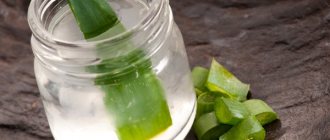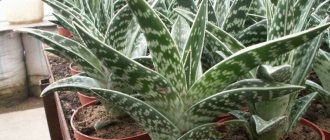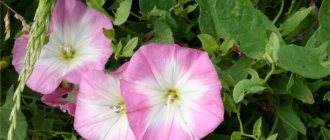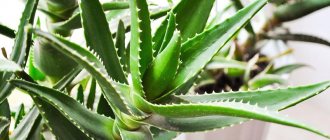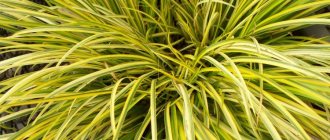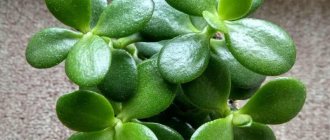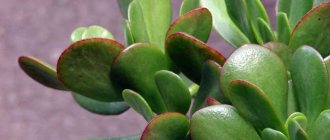Aloe vera is a perennial tropical succulent plant. It is a biogenic stimulant and affects the processes of metabolism and tissue regeneration. It has pronounced laxative, secretory, anti-inflammatory, wound-healing, antimicrobial, and bactericidal properties.
The healing properties and contraindications of aloe vera were known in Ancient Egypt. This plant was considered not only healing, but also sacred. It symbolized longevity and prosperity. It was depicted on the walls of Egyptian tombs, incense was made from it and brought as a sacrificial gift to the pharaohs. And, of course, the famous Cleopatra cream was prepared using aloe juice. The plant was also well known in the ancient cultures of India and China. South American shamans wore dried leaves around their necks as protective amulets. In the modern world, aloe is officially recognized as a valuable medicinal raw material; it is widely used in cosmetology and pharmacology, traditional and folk medicine.
Features of Aloe Vera
The medicinal properties of aloe vera have been studied the most. It is this type of succulent that is actively used in pharmacology, cosmetology, perfumery, and folk medicine. This particular species is an unpretentious houseplant and at the same time a useful “home healer”.
Origin and range
Aloe is native to North and East Africa. In the wild, this plant is found in Morocco, Mauritania, Egypt, the Arabian Peninsula, as well as in tropical Africa, Madagascar. Aloe is widespread in Asian countries, India, and South America. The island of Socotra is famous for its variety of species of this succulent. Here, by evaporating the juice, the world-famous dry extract of the plant, sabur, is obtained, which can be stored for a long time. In the wild, aloe can withstand arid and hot climates. Some species, such as aloe vera, can reach a height of up to 6 meters. The plant contains a lot of moisture, which it retains by closing the pores on the leaves.
Types of aloe
There are about 500 species of this genus of succulent plants. What medicinal types of aloe can be grown as indoor plants?
- Aloe Barbados, also known as aloe vera, real aloe.
- Aloe variegated.
- Aloe spinosa, or tiger.
- Aloe tree, or agave.
Aloe variegated and spinous are often bred as ornamental indoor plants. They have an "attractive appearance" with beautiful leaf colors and bright flowers. But agave and real aloe are more readily used for medicinal purposes.
Botanical description of aloe vera and care features
What does tree aloe, or agave, which is most often bred as a houseplant, look like? Botanically, it looks the same as its wild relatives, but is much smaller in size.
- Root and stem. The root system is underdeveloped. Traces of dead leaves remain on the woody stem - scars.
- Leaves. They are a leaf rosette that can reach 60–80 cm in diameter. The leaves are greenish-gray, smooth, fleshy, juicy, with jagged edges, slightly convex, pointed at the end. Leaves can grow up to 1 m tall.
- Flowers. In nature, aloe blooms only in the fifth or sixth year of life. In indoor conditions, aloe rarely blooms, and only in the winter months. The flower has the shape of a long raceme, on which bell-shaped, tubular flowers of bright orange color are collected.
How to care for agave?
- Place it on the sunny side, as it is a light-loving plant.
- Turn regularly so that the plant develops evenly.
- Large leaves are tied up.
- The plant is afraid of the cold.
- It likes abundant watering, but the water should not remain in the pan.
- The flower is prone to rotting if there is excess moisture.
- Replanted every three years.
- Active feeding is not recommended, otherwise the flower will grow too quickly.
- When planting, drainage must be placed at the bottom of the pot.
- The soil is formed from turf, garden soil, sand.
- The flower propagates well by cuttings, which quickly take root in water.
Procurement of raw materials
The leaves of the plant are used for treatment. Healing substances accumulate in the pulp of the leaves only in the second year of growth. It’s even better if the agave is at least 4 years old.
- Which leaves should I cut? It is recommended to remove the lower and middle, large and fleshy leaves, at the very base of the stem. Their length should be from 18 to 45 cm. You can also make medicine from the side shoots of aloe, which should be at least 15 cm long.
- How to store aloe leaves? Cut leaves should not be used immediately. The raw materials are kept in the refrigerator for 2 weeks (the leaves are first washed and dried well), tightly wrapped in paper. After aging, you can prepare juice, tincture, ointment, and other forms of medicine from the leaves.
We recommend reading: Medicinal properties and contraindications of hellebore, how to use
When industrially harvesting aloe raw materials, they are dried in special drying ovens. After which the leaves become wrinkled and brown. They can be stored for 2 years. Fresh raw materials are processed no later than after 24 hours, otherwise the beneficial properties of aloe are lost. Industrially, fresh juice is made from the plant, then it is evaporated and sabur is obtained, which is then used in pharmacology in powder form.
Secrets and difficulties of home growing
Growing aloe is not at all difficult. The flower is so unpretentious that caring for it is a pleasure. Agave is one of the few indoor plants that do not require fertilizing.
Temperature and light
The permissible temperature for normal plant life is considered to be from 12 to 30℃. It is advisable that during the cold season the room temperature does not exceed 20℃.
Remember!
The higher the thermometer rises, the more moisture the flower requires.
Aloe loves light very much. Therefore, if possible, it is placed on the window sills of windows facing south. To avoid sunburn during high solar activity, the flower is shaded with a curtain. In summer, it is better to take aloe out into the garden or onto the balcony.
Watering rules
Proper organization of watering plays a key role in growing aloe. Water the flower as follows:
- From April to mid-October, the flower is watered as the top layer of soil dries. The rest of the year it is watered no more than once a month.
- Top watering is alternated with bottom watering (through a tray).
Watering a flower - As the leaves of the flower become dirty, they must be cleaned of dust. To do this, use a damp cloth. In prickly species, dust can accumulate in the area of the thorns, so it would be a good idea to give the flower a monthly shower under running water.
- It is better to use rainwater for irrigation. If this is not possible, it is advisable to pass household tap water through a filter.
- The temperature of water for irrigation should correspond as much as possible to the air temperature in the room.
Important
It is very difficult to let a flower dry out, but to over-water it is quite possible. Excess moisture causes the roots of the plant to rot, which leads to the death of the flower.
The healing effects of aloe vera
What are the healing properties of aloe? What beneficial substances does it contain?
- Chemical composition. The plant contains many enzymes, phytoncides, microelements and vitamins. It contains a high content of organic acids, resinous substances, and antioxidants. The flower contains valuable allantoin and aloin, polysaccharides, phenols, bitterness, and glycosides.
- Basic pharmacological properties. These include: bactericidal, anti-inflammatory, antimicrobial, wound healing. In addition, the healing properties of aloe help in treating the gastrointestinal tract, normalizing digestion and improving appetite. The flower is famous for its tonic effect, helps the body cope with serious diseases, and strengthens the immune system.
Thanks to antioxidants, aloe removes toxins, waste, heavy metals from the body, prevents premature aging and cancer.
Compound
Aloe Vera contains valuable substances that are necessary for the normal function of organs and systems. These are various vitamins (A, C, E, group B), complex compounds, minerals (iron, fluorine, calcium, zinc, sodium, manganese) and organic acids. It also contains flavonoids, tannins, sugars, essential and essential amino acids, glycosides, and essential plant components:
- Antranols - regulate oxygen exchange in cells and tissues.
- Anthraquinines - have a laxative effect.
- Allontoins - nourish the dermis, make it elastic, normalizing water balance.
- Glucocides are natural protectors and act in the fight between the body and pathogenic agents.
Indications for use
For what diseases does aloe help and provide a therapeutic effect?
- Stomach treatment. Agave is effective for chronic gastritis and peptic ulcers. The plant is also used for infectious infections, for example, dysentery. Aloe is a powerful natural antibiotic; it kills E. coli and dysentery.
- Constipation. Aloe vera products are known to have a strong laxative effect. It is best to use sabur - a yellow, bitter powder made from aloe. It is taken in small doses - 0.1 g, diluted with water. The medicine eliminates chronic and atonic constipation, increasing the tone of intestinal smooth muscles. For example, in Germany, aloe is recognized as a laxative by the national health service. In pharmacology, it is added to various laxatives. The flower also effectively treats colitis and enterocolitis - inflammation of the large and small intestines.
- Pancreatitis. When the pancreas becomes inflamed, the outflow of its secretions is often disrupted. Agave juice stimulates the secretion of the pancreas and gall bladder. However, in acute forms of pancreatitis, treatment with aloe can aggravate the disease. But for chronic forms with a lack of enzyme production, the flower can help.
- Angina. The cause of sore throat is staphylococcus or streptococcus, which affects the mucous membrane of the tonsils. The plant prevents the proliferation of staphylococcus and streptococcus and promotes a speedy recovery. However, treatment of a real sore throat (not just a sore throat) is not complete without antibiotics. In this case, agave is included in complex therapy: the throat, tonsils, and pharynx are treated with diluted juice. The plant is also used for other throat diseases - tonsillitis and pharyngitis. In dentistry they treat gum inflammation and stomatitis.
- Diabetes. Toxins, obesity, excess cholesterol, diseased liver and pancreas - all this “organizes” the onset of diabetes in the body. Agave contains many enzymes that break down fats, regulate liver functions, and cleanse the bile ducts, lymph and blood. Aloe restores the chemical balance in the body and normalizes impaired metabolic processes in diabetes mellitus.
- Treatment of a runny nose. With ARVI, flu, and colds, a runny nose is one of the most common symptoms. Agave juice is used to disinfect the nasal passages. It must be diluted with water so as not to dry out the mucous membrane. Recently, information has appeared about the antiviral properties of aloe. The plant may be effective against viral respiratory infections.
- Sinusitis. An otolaryngologist treats sinusitis. Of course, in traditional medicine, agave is not a first choice medicine. Sinusitis is an inflammation of the maxillary sinuses, which can be treated over a long period of time on an outpatient basis. The flower is used as an auxiliary antiseptic and antibacterial agent. Like sore throat, sinusitis is most often treated with antibiotics.
- Diseases of the lower respiratory tract. Aloe is included in the complex treatment of pneumonia, bronchitis, tuberculosis and bronchial asthma. Pork or goose fat and natural butter are added to the mixture to treat a severe, annoying cough. It is believed that agave helps with whooping cough.
- Treatment of aloe wounds, burns and other skin lesions. Aloe can be used externally as an antiseptic. The flower heals well wounds, burns, ulcers, abscesses, dermatitis, any purulent inflammation of the skin, including bacterial ones.
- Poor appetite. Fresh juice is recommended, but in small doses. The bitterness contained in the plant stimulates the production of enzymes and increases appetite.
- Radiation exposure. Together with castor and eucalyptus oils, agave juice is taken to prevent or alleviate radiation sickness due to radiation exposure.
Another property of the flower that is less frequently mentioned is that it is a natural aphrodisiac. It is used to stimulate sexual activity and enhance potency in men.
We recommend reading: Useful properties and contraindications of sweet clover
Diseases and pests
Agave has good immunity. All diseases to which a flower can be exposed are due to human fault. The most common diseases are the following:
| Name of the disease | Causes | Symptoms | Treatment methods |
| Root rot | Overwatering | Stunted growth, stem rotting at the base, drying out leaf tips. | Pruning areas damaged by rot and treating with fungicide. |
| Dry rot | Improper care | There are no external symptoms. The plant quickly dries out in the last stage of the disease. | None |
Drooping leaves indicate a lack of light, and limp leaves that have lost turgor indicate that the agave has frozen.
A low level of air importance can provoke damage to the flower by scale insects. You can spot insects by the marks they leave on the inside of the leaf. Small brown spots that can be easily wiped off with alcohol are a sure sign of an attack by harmful insects. You can get rid of pests without using chemicals. It is enough to treat the flower with a concentrated soap solution a couple of times.
What are the contraindications of aloe
Acute forms of kidney, liver, pancreas and gall bladder diseases, cystitis, intestinal obstruction, individual intolerance with an allergic reaction. Aloe provokes a rush of blood to the pelvic organs, so it cannot be taken either internally or externally for hemorrhoids, uterine bleeding and any bleeding from the genital area. Long-term use or overdose can lead to leaching of trace elements - especially potassium.
Benefit
For a long time, aloe juice has been used to treat skin wounds, eye problems, and inflammatory phenomena in the body. They used it to treat skin defects, add it to tea, and prepare vitamin mixtures. Women enjoy using aloe as a dietary supplement due to its laxative properties and use it to care for hair, hands and face. Pharmacology, having studied the composition of a natural medicine, uses it as an ingredient in many medicines.
Use of aloe vera in folk medicine and pharmacology
Using aloe at home without consulting a doctor can be harmful to health. There are known cases of agave poisoning, which manifests itself in the form of the following symptoms - diarrhea (often with blood), nausea, vomiting, false urge to defecate, inflammation of the intestines, bleeding.
Ointment
The ointment is prepared on the basis of fresh juice. Pork fat should be rendered and rendered. It can be replaced with badger fat or ghee.
Preparation
- Take 150 g of aloe juice, 200 g of pork fat, 100 g of honey.
- Stir and heat until dissolved.
- Transfer the cooled ointment into a glass container.
- Store in the refrigerator.
This ointment can be applied to affected areas of the skin, purulent wounds, and burns. It is also used to lubricate the chest when coughing.
Juice
To get juice, you need to crush the leaf and squeeze out the liquid through a piece of gauze or bandage. Aloe juice is a basic component of many medicinal infusions and ointments. In folk medicine, many recipes from agave are described. It is prepared with wine, honey, walnuts, and lemon juice. For diseases of the bronchi and lungs, you can add decoctions of medicinal herbs to the mixtures - marshmallow, coltsfoot, licorice, wild rosemary, sage, anise, linden, mint and many others. The recipes use pure aloe juice, as well as its crushed leaves.
How is fresh juice used?
- It should be taken in a strict dosage - 1 teaspoon 3 times a day.
- When treating mucous membranes, it must be diluted with boiled water.
- Undiluted fresh juice is applied to the wounds; aloe leaves cut lengthwise can also be applied.
- For eye inflammation, the juice can be used in a strong dilution (1:10), and lotions are made from it.
- Recommended for many diseases: constipation, gastritis, pancreatitis, stomach ulcers, colitis, bronchitis.
- It is used as a prophylactic agent to strengthen the immune system during influenza and ARVI epidemics.
- Freshly squeezed juice cannot be stored; it should be prepared only for one-time use.
Alcohol tincture
Aloe tincture with alcohol is prepared in different ways. It is used externally as an antiseptic for treating wounds and purulent lesions (it should not be used on burns). It is used as an antiseptic for facial skin when diluted with water. Prepared on the basis of vodka or alcohol (diluted from 40 to 70%). There are also folk recipes that use dessert wine as a preservative.
Preparation
- Take 100 g of crushed aloe leaves.
- Place in a glass container and pour in 0.5 liters of vodka.
- Leave for 10 days.
The tincture does not need to be strained. Take a tablespoon half an hour before meals.
Decoction
Agave leaves combined with other medicinal herbs make a good antiseptic decoction that can be drunk and used externally for rinsing the nose and gargling.
Preparation
- Prepare 1 tbsp. a spoonful of chopped aloe.
- Mix 1 teaspoon each of chamomile, linden, oregano, and elderflower.
- Dial 1 tbsp. spoon of herbal mixture.
- Add aloe to it and pour a glass of boiling water.
- Leave for 30 minutes.
You don’t have to brew it, but add the raw juice to the already prepared decoction. Accepted in strained form. This decoction saves you from colds and relieves unpleasant respiratory symptoms. You can drink ½ glass several times a day.
Aloe vera with honey
Honey in combination with aloe is effective for gastritis with low acidity. It is also drunk for a severe cough due to acute respiratory viral infections, influenza, bronchitis, pneumonia, and to strengthen the immune system. Used in the form of compresses for skin lesions, masks for skin and hair care, tampons for cervical erosion.
Preparation
- Take 1 part fresh flower juice and 1 part honey.
- Mix the mixture thoroughly.
- Place in the refrigerator.
This mixture can be stored for a month, since honey is a good preservative. Take a tablespoon half an hour before each meal. Aloe and honey recipes can be varied. They add wine, ground walnuts, vodka, lemon juice and other ingredients. Read more about recipes and treatment of aloe with honey in our other article.
Facial care
At home, you can make creams, lotions, tonics, and face masks from the juice of the flower. These products have a softening, soothing, tonic, and moisturizing effect.
The juice is effective for dry, oily and aging skin, acne, pimples, purulent inflammation. You can wipe your face with fresh juice (or a piece of cut leaf) morning and evening.
We recommend reading: Properties of periwinkle, recipes, treatment, contraindications
Hair care
How to use aloe vera for hair in home recipes? It is used to make nourishing, moisturizing, strengthening masks for the scalp and hair, as well as decoctions for rinsing after washing. The plant is effective for seborrhea, dandruff, baldness, hair loss, and excessive oily hair. For preventive purposes, it is recommended to add a teaspoon of fresh juice to shampoos and conditioners. This gives shine and elasticity to the hair, promotes its rapid growth.
How to propagate and replant a flower at home?
Aloe is propagated by cuttings and separation of root shoots. Propagation by cuttings can be carried out all year round, and the shoots are usually separated during transplantation.
The material for cuttings is aloe leaf. It is cut off, treated with crushed activated charcoal or charcoal and left to dry a little. Then the cut sheet is placed in wet sand. Aloe cuttings do not require greenhouse conditions, so they are usually not covered with glass or plastic film. The sandy soil is moistened daily by irrigation from a spray bottle. As soon as the cuttings sprout the first roots, they begin to water it in the usual way.
Aloe propagation methods
Propagation by root shoots is an easier way to breed a new plant. The shoots are carefully separated from the mother bush. The fracture sites must be treated with an antiseptic. The shoots are planted in separate pots and cared for like adult aloe.
A young flower requires annual replanting, and adult plants can be left in the old substrate for 2-3 years. Experts recommend carrying out the procedure in the fall.
Aloe transplantation consists of the following steps:
- Choosing a pot. The flowerpot must be deep and wide enough. There must be drainage holes and a removable tray at the bottom.
- Drainage layer. The bottom of the pot is lined with a drainage layer consisting of expanded clay or coarse sand.
- Landing. The required layer of soil is applied to the drainage layer. Then the plant is lowered into the pot and the remaining voids in the pot are carefully filled with soil. The top layer of soil is moistened.
Soil for aloe can be purchased at flower shops or prepared yourself. To do this, mix sand with turf and leaf soil in a 1:1:1 ratio.
Features of using aloe vera for women
Aloe is used in gynecology to treat inflammatory diseases. However, these prescriptions belong to the field of traditional medicine. For example, not all gynecologists support the idea of auxiliary treatment of cervical erosion with tampons with aloe and honey. But in modern gynecological practice, injections (subcutaneous and intramuscular) with aloe vera are widely used. This remedy acts as a general tonic, increases resistance to infectious agents, and stimulates metabolic and regenerative processes in the female body. Injections are prescribed for cervical erosion, inflammation of the appendages, obstruction of the fallopian tubes, infertility, as well as for chronic genitourinary infections (mycoplasmosis, ureaplasmosis, chlamydia).
Aloe during pregnancy is used only on the recommendation of a doctor. A strict contraindication is the internal use of the medicine, despite all the undeniable benefits of aloe. The cause is the substances anthraquinones. They provide a powerful laxative effect for constipation, but can also tighten the muscle tone of the uterus and provoke premature labor or early miscarriage. The juice stimulates a rush of blood into the pelvis, which can also cause uterine bleeding and miscarriage. Pregnant women are only allowed to use this plant externally as an antiseptic and antimicrobial agent.
How to get juice from a plant?
If no contraindications to the use of the plant are found, then it is quite possible to prepare juice from it for medicinal purposes.
To do this, you need to take large, fleshy leaves from the bottom of the plant. They are the ones who will bring the most benefit. The leaves should be placed in a juicer or cut into pieces and then squeezed through cheesecloth. The benefits of aloe for the human body are reduced when the juice comes into contact with iron objects due to the oxidation of vitamin C. Long-term exposure to air will also cause harm.
Dosage forms of aloe vera in pharmacology
Aloe is produced as independent preparations in liquid and dry extract, and as part of many other medicines.
- Liquid extract. This drug is a biogenic stimulant and is intended for subcutaneous injection. Used in gastroenterology, neurology, pulmonology. Injections are prescribed for gastritis, colitis, cholecystitis. They provide a therapeutic effect for neuralgia, neuritis, pneumonia, bronchitis, tuberculosis, and after a stroke. Injections are recommended in the complex treatment of male infertility, various ophthalmological diseases - conjunctivitis, blepharitis, keratitis and other inflammations. The drug is effective in reducing visual acuity, hearing and smell. Read more about aloe injections in our other article.
- Juice. Used internally, externally, locally. The juice preservative is alcohol. Belongs to the group of laxatives, tonics, immunomodulatory, bactericidal drugs. The juice enhances the effect of other laxatives, as well as drugs that stimulate hematopoiesis. There may be a risk of potassium deficiency if aloe juice is used concomitantly with diuretics (diuretics).
- Aloe liniment. It is a creamy mass. It is used externally for burns (including radiation), dermatitis, neurodermatitis, psoriasis, eczema, lichen ruber, atrophic lesions of the mucous membrane and skin of the vulva. Apply a thin layer to the affected areas several times a day, covering with gauze. For severe lesions, apply a thick layer without a bandage.
- Syrup with iron. This combined herbal preparation is prescribed for hypochromic anemia; it replenishes iron deficiency and increases hemoglobin levels. The drug can also be used as an antiseptic, laxative, choleretic, adaptogenic and tonic. The syrup has a fairly extensive list of contraindications: chronic renal failure, heart failure, cholelithiasis, cystitis, high blood pressure, hemorrhoids, uterine bleeding, and other types of anemia.
- Pills. Prescribed for progressive myopia, to accelerate tissue regeneration. Drink for a long time - at least a month. If prescribed by a doctor, you can take a second course after 3–6 months. There are film-coated tablets, 20 pieces per package. Another drug is also offered on the pharmacological market - aloe in the form of a dietary supplement (240 pieces in a jar). This drug contains cellulose, lactose, vitamin C, B vitamins, calcium, nicotinamide (vitamin PP).
You can also purchase skin care cosmetics with aloe extract in pharmacies and specialized stores - hand and face creams, lotions, peeling masks, gels, deodorants.
Aloe in folk medicine is a proven and effective remedy. For many decades, recipes for preparing tinctures, ointments, and decoctions from the juice of this flower have been collected. They are used in the complex treatment of constipation, gastritis, pancreatitis, sore throat, laryngitis, sinusitis, bronchitis, pneumonia, anemia and many other diseases. No less valuable is the external use of agave.
Source
Reviews
My grandmother has glaucoma. We have been using the aloe activator drug for her treatment for 6 months. Grandmother’s vision has improved slightly, we have already abandoned the operation, we will continue treatment with homemade drops, and we specially purchased an adult aloe agave plant.
Anastasia, 28 years old, Kursk
On the advice of a herbalist, I decided to treat gallstones with a preparation containing aloe vera. At the beginning, I had an exacerbation - there was heartburn and severe pain in the back and abdomen. But the aggravation passed. I drank stabilized aloe gel in small sips. Now I’m going for an ultrasound, I hope that the result will be positive and I won’t have to remove the stones.
Irina, 47 years old, Belgorod
Natalia
Author
Ask a Question
Almost every family in the post-Soviet space is familiar with their pet - the aloe vera plant. This plant may not always shine with beauty, but its benefits have been felt at least once in every home. I would like that in the age of unstoppable development of new technologies, long-known methods of treatment with medicinal plants do not disappear from our homes, and that future generations do not forget about them. Health to you and your loved ones!
